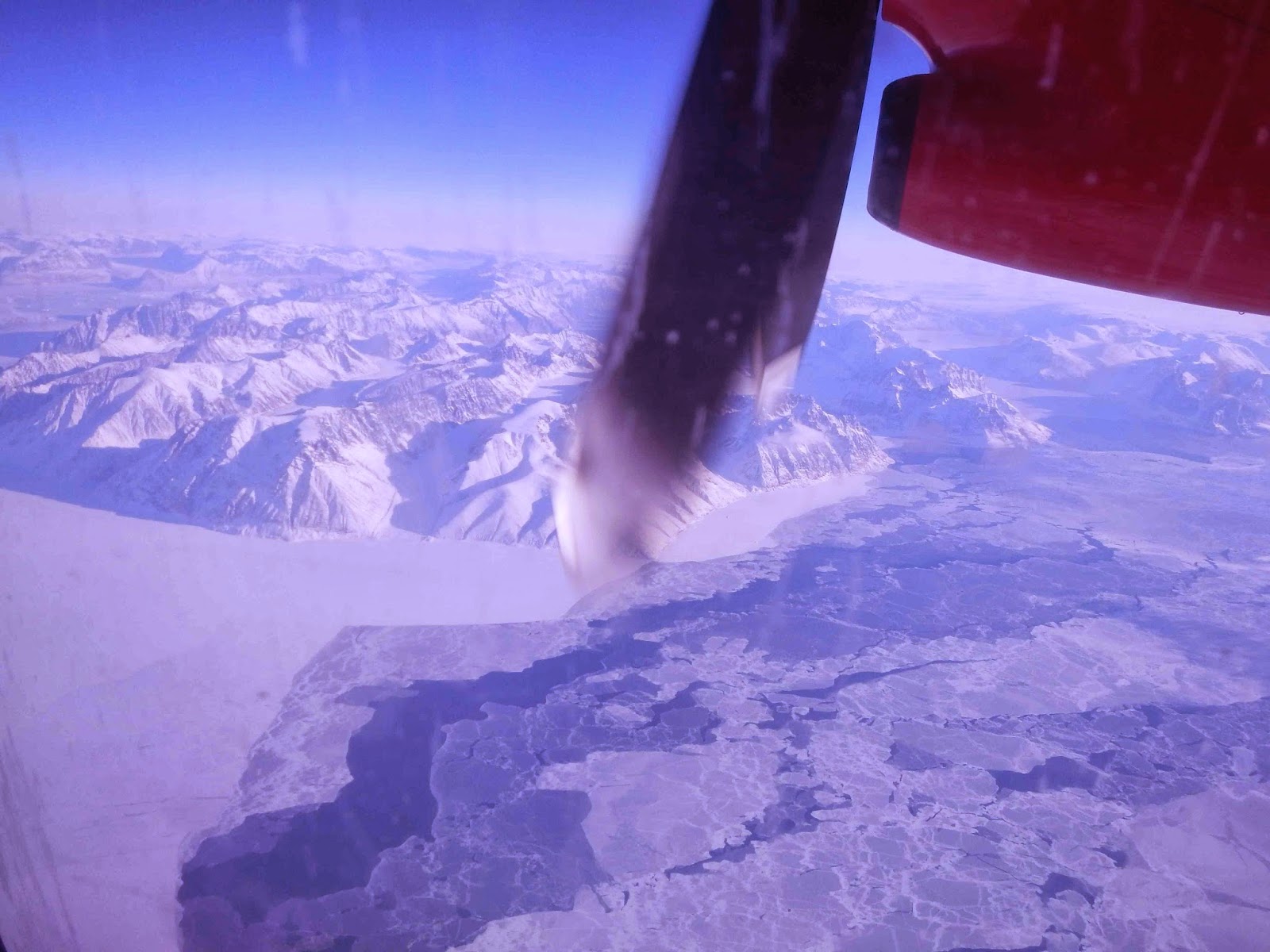We’ve been making good progress up here in
Qaanaaq, it is definitely a really good thing that we’ve got these four days
here to assemble our kit, practice making our measurements and start to get
used to working in the cold. The conditions have been good here, but even at
-20C to -25C, with a little wind, fingers and toes can get numb very quickly! Conditions
were even sufficiently still yesterday morning for us to see our first polar
mirages, off in the distance over the sea ice – cliffs appearing on a distant
island where there are none and icebergs seemingly
floating on the horizon. We’re anticipating possibly another 10 degrees colder
on the sea ice, where we’ll be just a few hundred kilometres from the pole, so
being able to ease in gently is a real bonus.
We’ve assembled our sled-radar-antenna rig with a little help from some of the locals. Turned out the wood I had packed that sits flat on the sled, and which supports the antenna frame, wasn’t really fit for purpose. Luckily we’re staying in a dog sledding community, so there are plenty of workshops and spare bits of timber lying around. Hans Jensen took us down to see Morton(sp?) the friendly carpenter who was kind enough to provide us with some timber that did the trick perfectly. And help here doesn’t always have to be sought out; on Wednesday afternoon one of the local hunters (Martin, we think, although we aren’t sure) saw us pathetic southerners fiddling with our ratchet straps to get the antenna frame securely attached to the sled. Needless to say he had some ideas on the best way to do it, and gave us a bit of a schooling on how to rig a sled.
Yesterday afternoon we practiced measuring
and marking out our snow grid. This is a 20x20m square centred on a
corner-reflector (a big triangular piece of metal that is very bright to radars
on the plane, and acts as a calibration target) and the idea is to mark it out
as accurately as possible. At no point are you allowed to step inside the
square and risk disturbing the snow. Two people then walk in lines measuring
the snow depth and calling out the numbers to the third person who writes them
down. Sounds easy enough but it can actually be a bit tricky, especially if it’s
windy. And then you have to contend with the other (canine) locals – the
semi-feral sled dog puppies were determined to run off with our little red
marker flags!
Yesterday afternoon we went down to the
Qaanaaq promenade and had a walk on the shore-fast ice. We were unsure before
we arrived whether this would be safe, but after watching JCB diggers and
dumper trucks driving back and forward on the sea ice to collect fresh water
ice from the icebergs, we thought it was probably OK. The packs of sled dogs are
kept out here when they aren’t out on hunts and it was nice to see all of
Qaanaaq from the sea.




















